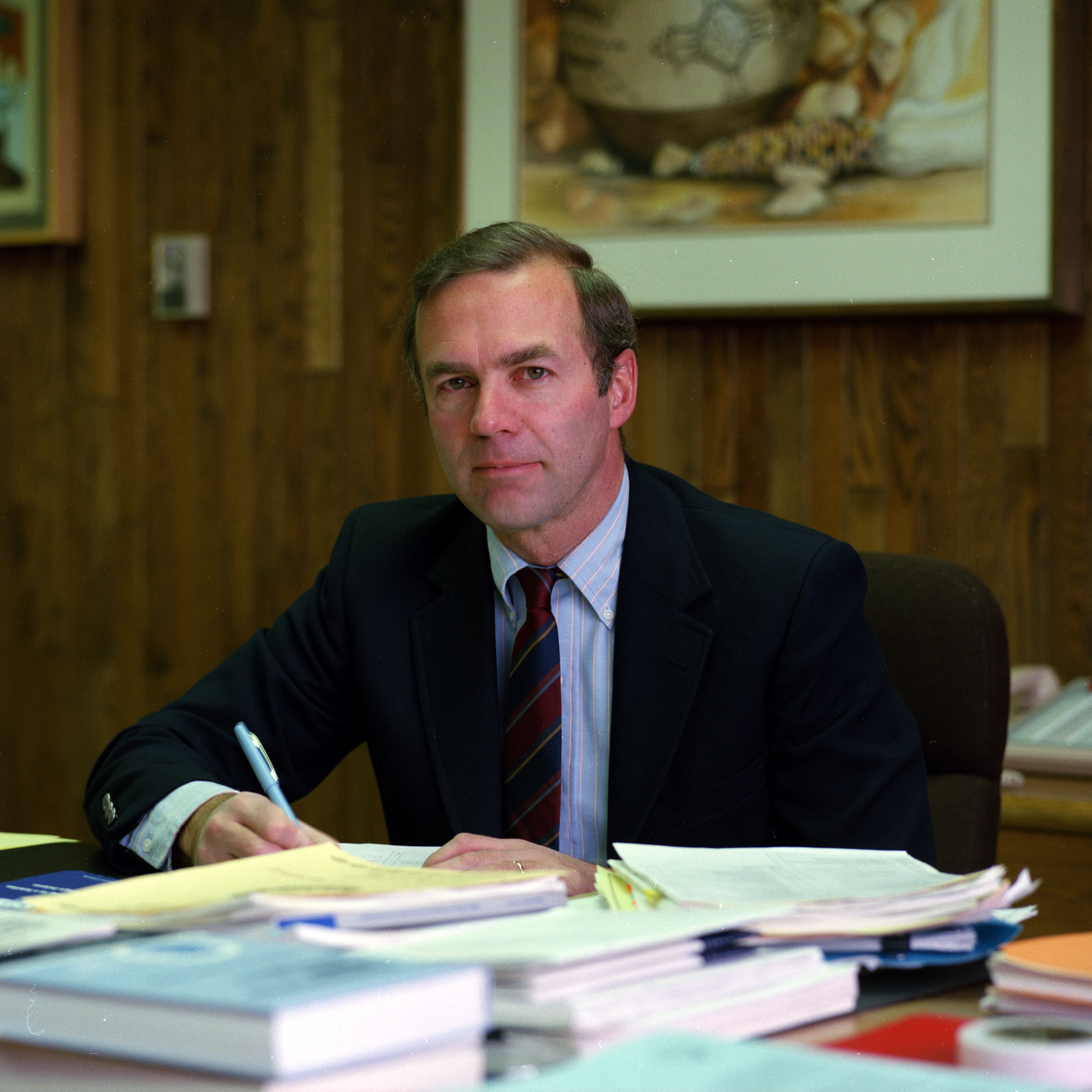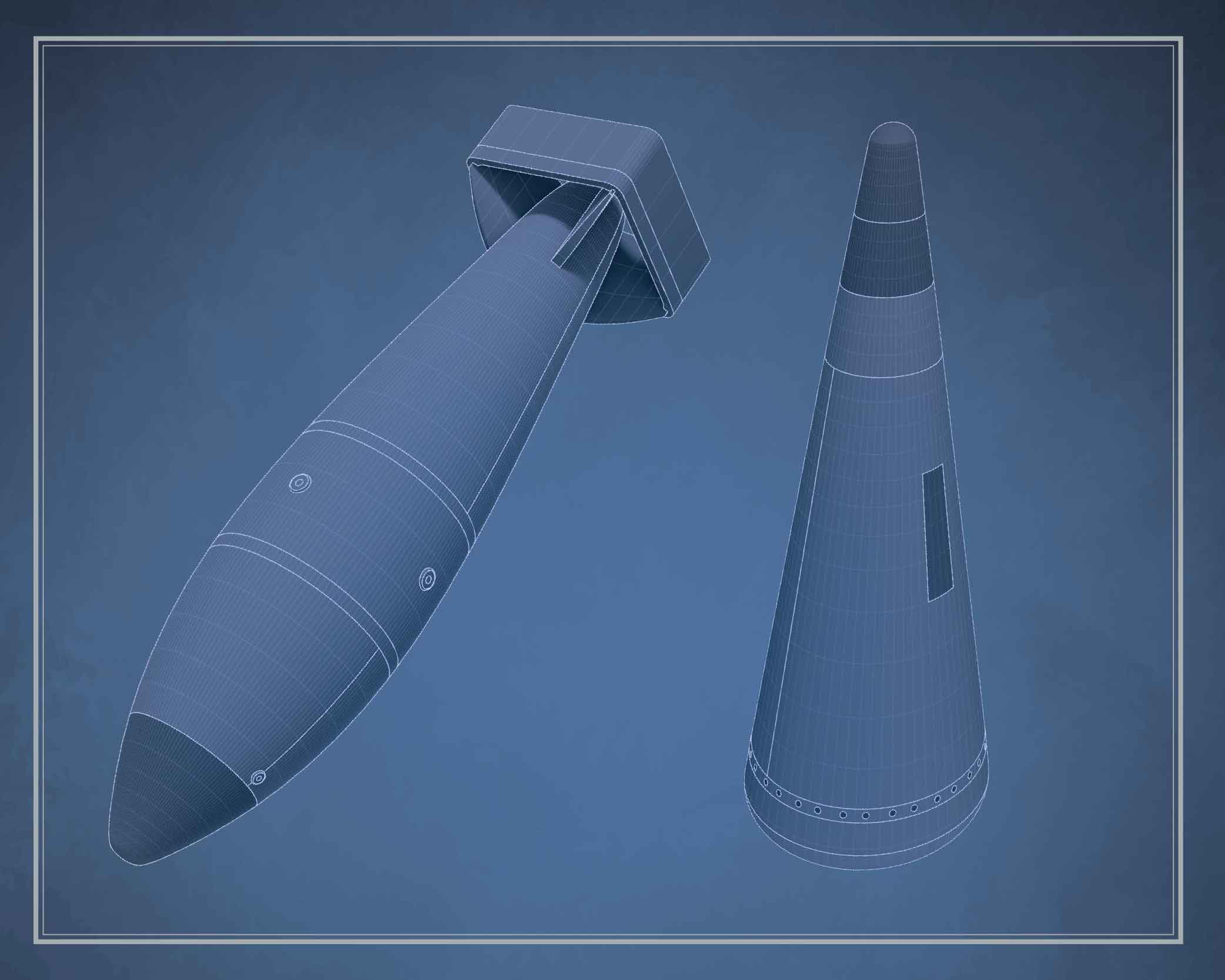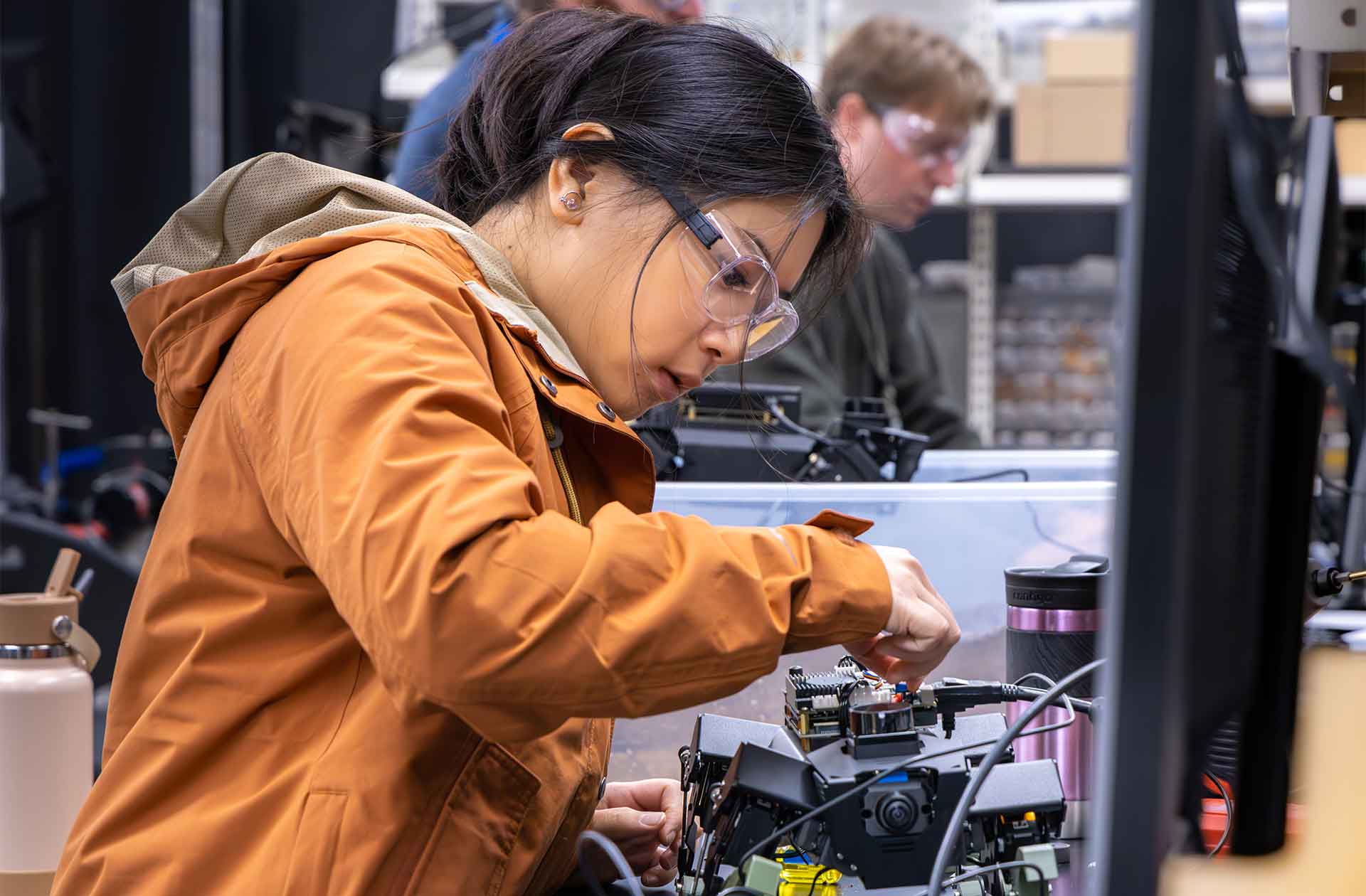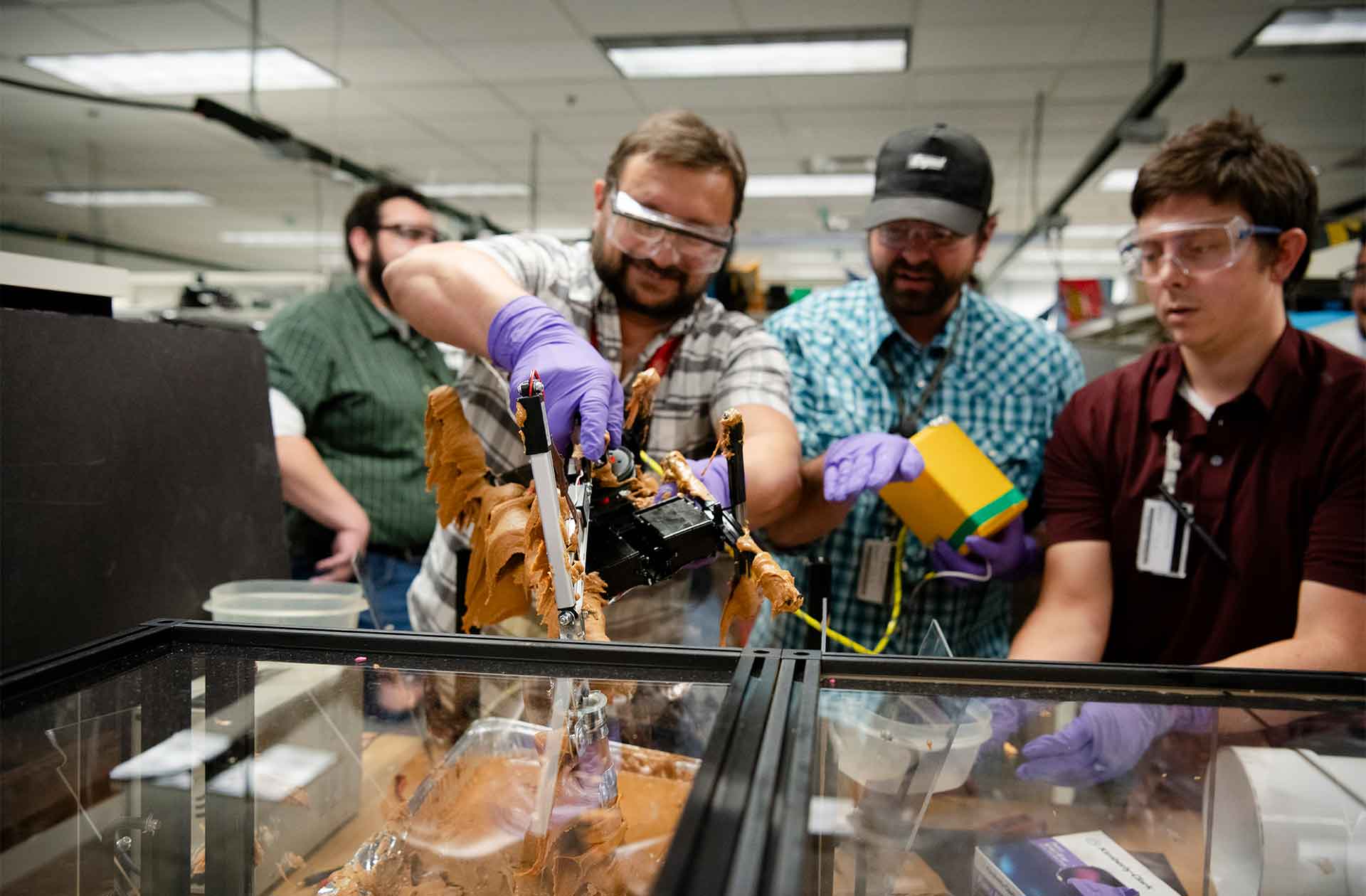Engineers making a difference
Meet 23 Laboratory engineers who support national security.
- Jake Bartman, Communications specialist

At Los Alamos National Laboratory, more than 3,500 employees have engineering degrees. These engineers support every aspect of the Laboratory’s national security mission, playing crucial roles in everything from designing and implementing the equipment and facilities that Los Alamos needs to produce plutonium pits (the cores of nuclear weapons) to planning and executing tests that verify the performance of both weapons components and full weapons systems.
“Engineers make it happen,” says Johnny Hurtado, the Lab’s Engineering Technology and Design division leader. When it comes to the Lab’s nuclear security mission, Hurtado says engineering plays a crucial role. “Our work involves the design, testing, and analysis of everything from weapons components to full weapons systems. Weapons analysis means looking for answers to questions about a weapon’s behavior and response.”
Don Quintana, former acting Weapons Engineering associate Laboratory director and longtime Los Alamos engineer, says, “Engineers are responsible for how a weapon is built, deployed, and cared for. It’s cradle to grave.”
On the following pages, you will meet 23 Laboratory engineers who are contributing to Los Alamos’ national security mission. You’ll learn about how they became engineers, how they came to the Laboratory, and how their work helps Los Alamos ensure the nation’s nuclear deterrent remains safe, secure, and reliable.

Alexander Barna
Project engineer; Project Engineering
A native of the Bluegrass State (aka Kentucky), Alexander Barna earned a bachelor's degree in mechanical engineering from the University of Kentucky before coming to Los Alamos. He was drawn to the Laboratory by the opportunity to do impactful work. “My motivation is to contribute to something meaningful and larger than myself,” Barna says.
At the Laboratory, Barna works in the Plutonium Infrastructure division, where he serves on the Field Engineering Response Team (or FERT). FERT resolves issues that prevent the execution of projects related to equipment or infrastructure in the Plutonium Facility.
“My work supports the mission by ensuring the quick resolution of field issues that halt work, specifically related to the deactivation and decommissioning, upgrade, and installation of gloveboxes and their utilities,” Barna says, referring to the specialized enclosures that contain hazardous material such as plutonium. This work helps ensure that the Laboratory achieves its goal of producing no fewer than 30 plutonium pits per year by 2030. ★

Caitlin Bennett
Design engineer; Weapons Product Definition
Growing up, Caitlin Bennett learned to appreciate working with her hands. “I was always working with my dad and grandpa outside,” she says. “We would restore cars, tear up the yard with a tractor, fix the fence, and more.” Those experiences informed her desire to learn why things work the way they do. “I wanted to design and build things to help others—and engineering was the perfect path for that!”
Bennett earned a bachelor’s degree in mechanical engineering from Texas A&M University before coming to the Laboratory. At Los Alamos, Bennett supports the design and definition of hydrodynamic tests at the Dual-Axis Radiographic Hydrodynamic Test (DARHT) facility. (Hydrodynamic tests involve mockup nuclear weapon assemblies, which are compressed to the point that their components flow like liquids, allowing researchers to evaluate weapon systems’ performance without nuclear testing.) Bennett also works with lead test engineers to support the execution of the tests themselves. ★

Anthony Chavez
R&D engineer; Engineering, Operations, and Physics
Anthony Chavez, who grew up in Santa Fe, New Mexico, was one of six machinist apprentices (selected from 300 applicants) who started at Los Alamos in 1989 as part of the Machinist Apprenticeship Program. He later earned a degree in mechanical engineering from the University of New Mexico, and for more than 25 years, he has worked at DARHT.
Chavez’s experiences at DARHT have informed other aspects of his work, including when he completed design work for the Scorpius accelerator, the development of which the Laboratory is leading at the Nevada National Security Sites in Nevada. Chavez says that J division (which operates DARHT) has been a great fit. “Everyone works together,” he says. “Physicists express what they need, and then we design and engineer a solution, working together to get it done.” ★

Ian Combs
Project engineer; Plutonium Facilities Engineering: Project Engineering
Ian Combs earned a bachelor’s degree in chemical engineering from the University of Cincinnati before coming to Los Alamos in 2023. At the Laboratory, he works as a project engineer, managing projects in the Plutonium Facility that range from modifying or fabricating equipment to reconfiguring buildings and systems. This work means that every day is different: some involve evaluating aspects of the facility or pieces of equipment, while others entail planning and executing design reviews, meeting with program managers to discuss projects, and more.
“When I was a kid, I liked finding ways to improve or fix anything that I could, so engineering just seemed like an obvious choice of career,” Combs says. “Being an engineer is fulfilling because every day holds a new situation with new things to explore and learn.” ★

Dylan DeGoes
Field engineer; Plutonium Infrastructure Engineering—Field Engineering
Dylan DeGoes earned a bachelor’s degree in aerospace engineering (with a minor in mechanical engineering) from the University of Texas at Arlington before coming to Los Alamos. Now a field engineer at the Laboratory, he is working toward a master’s degree not in engineering, but in business administration. “The goal is to gain experience in organizational strategy and leadership through the MBA and then apply that in a leadership position here at Los Alamos,” he says. “At the end of the program, I’m expecting to have a greater understanding of how the technical aspects of engineering interface with the business aspects.”
At Los Alamos, DeGoes’ day-to-day work involves the demolition of old equipment and the installation of new equipment inside the Plutonium Facility. Among other things, this necessitates reviewing engineering designs for construction readiness, verifying ordered materials, and—in his capacity as a pressure safety officer—evaluating piping systems for safety and compliance. ★

Hannah Ekblad
Device engineer; Weapons Test Execution
Hannah Ekblad traces her career in engineering to her participation in the Science Olympiad program for middle- and high-school students, which involves training for and competing in a series of competitions in fields ranging from genetics to mechanical engineering. The program piqued her interest in the kind of problem solving that engineering involves, and she went on to study chemical engineering at Colorado State University, later earning two engineering master’s degrees—one in systems engineering and one in technical management.
At Los Alamos, Ekblad supports hydrodynamic tests at DARHT. As a device engineer, Ekblad oversees the design and assembly of test devices, the tests themselves, and evaluation of the results. Her work necessitates collaboration with the 12-plus Laboratory groups that support such tests—a process that Ekblad finds edifying. “This type of work is analogous to running a marathon. It’s a slow process, but it’s rewarding at the end,” Ekblad says. ★

Michelle Frybarger
Test engineer; Test Engineering
After earning a bachelor’s degree in mechanical engineering and master’s degrees in biomedical engineering and project management, Los Alamos native Michelle Frybarger returned to her hometown to take a job at the Laboratory. Currently, Frybarger works both as a test engineer in the Weapons program (conducting thermal and mechanical tests on weapon components) and as a systems engineer supporting the W88.
“I always liked solving problems as a kid, especially puzzles, and I was a huge math nerd,” Frybarger says. “As I got older, I enjoyed building things, taking things apart, and figuring out how they worked. I carried my love for problem solving into my career, and it was the best decision I ever made.” ★

Mychael Garcia
Nuclear facilities engineer; Programmatic and Glovebox Systems
A native of White Rock, New Mexico (the town just south of the Laboratory), Mychael Garcia earned his bachelor’s degree in engineering from Fort Lewis College in Colorado. His studies focused on robotics, which required mechanical, electrical, and computer engineering know-how.
“I grew up liking to take things apart and see how they worked, even if I had a couple leftover screws (unnecessary parts, in my opinion) when I reassembled them,” Garcia says. “Engineering seemed like the perfect fit for me.”
At the Laboratory, Garcia has helped support the Plutonium Facility’s trolley system. This trolley system is a key component of the production process, allowing for the movement of special nuclear material such as plutonium between different steps in the production process. ★

Christina Hanson
Materials engineer; Nondestructive Testing and Evaluation
Having begun her career at Los Alamos as a high-school student, Christina Hanson pursued a varied path before becoming an engineer: She earned a bachelor’s degree in chemical physics, a master’s degree in organic chemistry, and a doctorate in nanosystems and microsystems engineering. “When I had the opportunity to move from more of a basic science focus to engineering, I jumped at the opportunity and have been hooked ever since,” she says.
At the Laboratory, Hanson brings her experience to bear in the Nondestructive Testing and Evaluation group. This group captures radiographic images of an enormous variety of objects, supporting research and development related to every weapons system and production program at Los Alamos (and on behalf of collaborators, including Lawrence Livermore National Laboratory and the United Kingdom’s Atomic Weapons Establishment). “Sometimes, we get one-off items like T-rex or ankylosaurs skulls from the New Mexico Museum of Natural History, too,” Hanson says. ★

Lauryn Hoch
Integration engineer; DARHT Experiments and Radiographic Science
Lauryn Hoch, who has degrees in aerospace engineering and mechanical engineering, describes herself as an integration engineer on complex systems. “My job is to gather disciplines and experts to figure out how all the pieces of a large project fit together,” she says.
Among other projects, Hoch is leading a team that spans many Laboratory organizations to implement a new timing and firing system at DARHT—the first major upgrade to the system since it was implemented 25 years ago—and to develop a test to qualify the system. Hoch is also a lead experimenter at DARHT, working with scientists and engineers from Los Alamos and Livermore to design and execute hydrodynamic tests that support the nuclear stockpile.
“Honestly, I didn’t see myself doing anything else,” she says of her decision to become an engineer. “Maybe in a different life, I would be a lawyer or a patient advocate. Those are important careers, too!” ★

Emily Malmo
Project engineer; Plutonium Facilities Engineering: Project Engineering
Emily Malmo, who is from Idaho Falls, Idaho, earned a bachelor’s degree in mechanical engineering from Gonzaga University before coming to Los Alamos. At the Laboratory, Malmo works as a project engineer, supporting the Laboratory’s mission by managing technical aspects of projects to replace, upgrade, and enhance the safety and reliability of equipment inside the Laboratory’s Plutonium Facility.
“Engineering gives me the opportunity to constantly learn and develop new skills,” Malmo says. “I enjoy working with team members on diverse and challenging projects to make a meaningful impact.” ★

Ted Martinez
R&D manager; Military and Stockpile Operations Office
Ted Martinez grew up in northern New Mexico, and by the time he was in high school, he knew he wanted to be an engineer at Los Alamos (which was where his mother worked). In 1990, Martinez started at the Laboratory through the U.S. Department of Energy’s’s High School Science Internship Program, before being hired on to the Weapons Program’s Engineering Science and Applications division as an undergraduate student. In the decades since, he has worked as a mechanical engineer in the Weapons Program in various capacities.
Since 2012, Martinez has worked in and led the Military and Stockpile Operations Office (W-MSO), which helps the Department of Defense maintain the nuclear stockpile. W-MSO is also responsible for operations at the Weapons Engineering Science and Technology Education Center—a hands-on training and R&D facility for weapons engineering staff. “Anytime there are issues or questions related to maintenance of the stockpile, those come back through us, and then we coordinate the Los Alamos position,” he explains. “It’s one of the places where the rubber meets the road.” ★

Colt Montgomery
Mechanical engineer; National Security Earth Science
Growing up, Colt Montgomery always enjoyed taking things apart to figure out how they worked. “In college, I chose mechanical engineering because of the breadth and diversity of topics it involves, so I didn’t have to choose just one thing to focus on,” Montgomery says. He later earned a PhD in the field from Carnegie Mellon University.
Montgomery’s career has delivered on the prospect of doing many kinds of work. At the Laboratory, one of his main duties is to plan and execute large-scale national security–related experiments throughout the United States, managing the many science and engineering aspects involved (as well as lots of paperwork). He also develops and fabricates novel additive manufacturing materials and components.
“The Laboratory has knowledge and capabilities that aren’t available anywhere else,” Montgomery says. “We leverage these capabilities to develop tools and techniques that allow us to detect and characterize nuclear threats around the world.” ★

Kyllean Myatt
Nuclear engineer; Project Management ALDPI
Kyllean Myatt’s father worked in the nuclear security enterprise. “I grew up near the Savannah River Site and the Hanford Site, where my father worked as a project engineer,” he says. “With his background in mechanical engineering, he was keen on passing on that engineering mind. None of my siblings were very interested in math or science, but I took to it pretty naturally.”
Myatt earned a bachelor’s degree in nuclear science and engineering and is working toward a master’s degree in nuclear engineering. At Los Alamos, he leads FERT, which supports the installation of equipment inside the Laboratory’s Plutonium Facility. “When installing equipment in a nuclear facility, problems are bound to pop up,” he says. “FERT’s goal is to keep work in the field moving, and when it stops, to get it started again.” ★

Paul Peterson
Project-program director; Nuclear Explosives Safety Office
In 1994, Paul Peterson was a rising senior at Brigham Young University and was looking for an internship. At the recommendation of a friend, he drove to Los Alamos and spent two days handing out his resume. A few weeks later, he received a call about doing explosives research at the Laboratory. “I thought, ‘I could blow things up’,” he remembers, and he took the job. Shortly thereafter, he met a girl who grew up in Los Alamos and realized, “Now I’m really stuck here.”
Peterson went on to earn a PhD in mechanical engineering from the University of South Carolina. Today, he is the program director for the Nuclear Explosives Safety Office in the Weapons Systems division. Peterson recalls that in 2011, he traveled to the Pantex Plant in Texas, where the United States’ nuclear weapons are assembled and disassembled, to help dismantle B53 bombs. Then-Vice President Biden was also there, thanking employees for their work and posing for photos with the last B53. But unbeknownst to Biden, “it was really the next-to-last B53,” Peterson says. “We had the last one next door and were figuring out how to take a detonator out of it that was stuck.” ★

Brenda Quintana
Mechanical engineer; J Division Nevada Operations
Brenda Quintana started at Los Alamos after earning her associate’s degree in design drafting. Her work involved supporting experiment designers and engineers who were planning and executing experiments. “I was really in awe of the work that the designers and engineers did, and I thought that maybe I could give it a try,” she says. In pursuit of that goal, while working at the Laboratory, she earned a bachelor’s degree in mechanical engineering (and she is now working toward a master’s degree in the subject).
Today, Quintana works as a test director, supporting the planning of subcritical experiments that are used to verify the performance of weapon components without nuclear testing. This work involves designing and conducting small-scale tests to support upcoming larger tests. Completing these experiments involves coordinating between many parties, including hardware, plutonium, and assembly engineers. “Without the entire team, we couldn’t get this mission-critical work done,” she says. ★

Sonrisa Salazar
Mechanical engineer; Plutonium Infrastructure Engineering–Field Engineering
Although Sonrisa Salazar earned her bachelor’s degree in chemical engineering (from New Mexico State University), at Los Alamos, she works as a mechanical engineer, applying her skills in engineering and mathematics in new ways. “There was quite a learning curve, and it took me about a year to gain confidence, during which I learned a great deal,” she says. “But with excellent mentorship and inquisitive, supportive peers, it’s been a safe place to grow.”
At the Laboratory, Salazar works with construction teams in the Plutonium Facility to design and implement the gloveboxes that make it safe to handle materials such as plutonium. Her day-to-day duties involve supporting material management, facilitating tests and inspections, and ensuring that gloveboxes adhere to design specifications. “I chose engineering as a career because I have a passion for problem solving and enjoy being challenged,” she says. “Every day brings fresh challenges that require quick adaptation!” ★

Scott Schilling
Mechanical engineer; W78 Systems Engineering
Scott Schilling was born and raised in Los Alamos. When it came time to go to college, he chose Montana State University because he could study engineering and go skiing—and because Montana State was where his parents and grandparents had gone.
For about 10 years, Schilling worked in the New Experiment Engineering group at the Los Alamos Meson Physics Facility (now known as the Los Alamos Neutron Science Center). “I had great mentors and leaders who taught me about engineering and machining,” Schilling says. “My group leader let me work on one of my passions, which is computer-aided design (CAD) systems.”
In the mid-1990s, Schilling moved into the Weapons Program to work primarily on CAD implementation. He currently works as a system engineer on the W78. ★

Ron Smith
R&D engineer; Nondestructive Testing and Evaluation
Three decades ago, R&D engineer Ron Smith earned a PhD from the University of Wisconsin-Madison and came to Los Alamos as a postdoctoral researcher. Through a Cooperative Research and Development Agreement, he worked with a company in Wyoming to develop an innovative process for cleaning up oil-field waste. Smith holds a patent for this work (and another patent for similar work).
Smith now works in the Laboratory’s Non-destructive Testing and Evaluation group, where he has been for about 20 years. Among other endeavors, he helped transition the Detonator Production division from film radiography to computed tomography, which, he says, “has been a big step forward for detonator production” that has made the production process more efficient. He is also committed to mentoring younger people in his group. ★

Elly Stein
Project engineer; Project Engineering
Elly Stein’s grandfather worked in General Electric’s nuclear energy division, which inspired Stein to explore a career in the nuclear security enterprise. She earned her bachelor’s degree in chemical engineering from the University of Alabama, and she is working toward a master’s degree in engineering management from Texas A&M University.
Stein’s work involves ensuring that designs for the installation of infrastructure and other capabilities in the Plutonium Facility meet nuclear safety and other criteria. She is responsible for resolving conflicts and ensuring that work is aligned with sound engineering principles. “My time at the Laboratory has been extremely challenging, in a good way,” Stein says. “It has pushed me to grow as a peer and a leader and pushed me to take on challenges I never thought I’d be able to take on.” ★
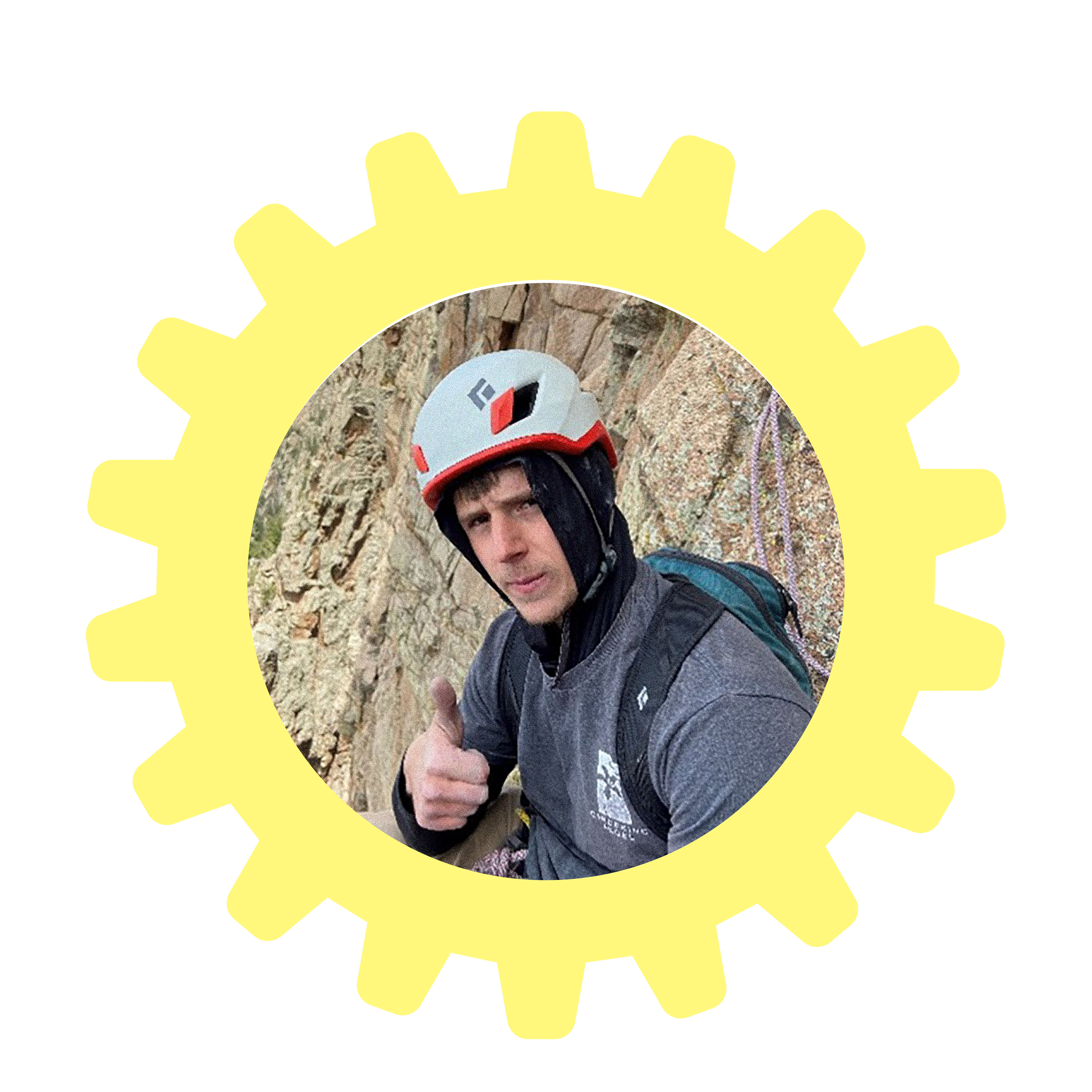
Charlie Tappan
Test engineer; Test Engineering
As a test engineer, Charlie Tappan—who earned a bachelor’s degree in mechanical engineering from Michigan State University—helps test weapons systems’ flight bodies (the part of a weapon that ensures its delivery through the air). Tappan’s work involves designing fixtures, developing test procedures, and evaluating hazards to perform tests safely and effectively.
“When we perform a test, we are using a test body to replicate what a real system would be experiencing in the field. This allows us to understand how systems will respond to the wide range of environments that we expect them to see,” Tappan says. “I really enjoy that as a test engineer, I get to do a mix of hands-on work, design, and planning.” ★

Morgan Tompkins
R&D engineer; Experimental Device Engineering and Assembly
Morgan Tompkins didn’t plan to be an engineer, but rather a meteorologist: She wanted to earn a pilot’s license and fly a diagnostic airplane for hurricane data collection. But while taking prerequisite courses at New Mexico Tech, she took an elective called “Introduction to Explosives” that inspired her to pursue a different career path. She went on to earn both a bachelor’s and a master’s degree in materials engineering.
Today, Tompkins leads a team that assembles experimental devices for tests at the Nevada National Security Sites. Her work involves translating design definitions for high-explosive test devices into assembly or disassembly procedures. These devices are then used in experiments at PULSE (the Principal Underground Laboratory for Subcritical Experimentation) in Nevada.
Although she didn’t end up flying airplanes near hurricanes, Tompkins still enjoys the occasional adrenaline rush: “My favorite quote to describe my life is, ‘If you’re not living on the edge, you’re taking up too much space,’” she says. ★

Delfinio Valdez
R&D engineer; Operational Performance Assurance
Delfinio Valdez, who is from Cañones, New Mexico, was always intrigued by the idea of engineering. “The title ‘engineer’ sounded cool to me growing up, and from a young age, I was always fascinated by the idea of solving real-world problems through creativity and innovation,” he says.
Valdez earned a bachelor’s degree in nuclear engineering from the University of New Mexico before coming to Los Alamos, where he works as a research and development engineer. Among other things, Valdez uses software such as SolidWorks to design and 3D-print safety measures—specialized objects that help prevent accidents and keep operators of gloveboxes (enclosures used to handle hazardous materials) safe. ★
